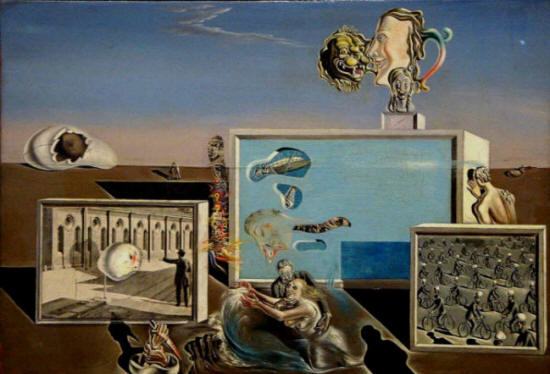Hypnagogic State - Hypnagogia
Hypnagogia is the experience during the onset of sleep of the transitional state between wakefulness and sleep, the hypnagogic state of consciousness, .
This hypnagogic state occurs at stage 1 of the natural sleep cycle. In the borderlands between wakefulness and rest is a strange and fascinating state of consciousness characterized by dream-like visions and strange sensory occurrences. Psychologists call this stage hypnagogia but centuries before they created a term for it, artists were using the hypnagogic state to tap into some of their best ideas. (reference) Salvador Dali, the famous Spanish surrealist painter, was intrigued with the images which occur at the boundary between sleeping and waking. Dali called hypnagogia "the slumber with a key," and he used it as creative inspiration for many of his imaginative paintings.
"You must resolve the problem of ‘sleeping without sleeping,’ which is the essence of the dialectics of the dream, since it is a repose which walks in equilibrium on the taut and invisible wire which separates sleeping from waking" Dali wrote in his book 50 Secrets of Magic Craftsmanship
Salvador Dali experimented with various ways of generating and capturing these fantastical images. His favorite technique is that he would put a tin plate on the floor and then sit by a chair beside it, holding a spoon over the plate. He would then totally relax his body; sometimes he would begin to fall asleep. The moment that he began to doze the spoon would slip from his fingers and clang on the plate, immediately waking him to capture the surreal images. (reference)

According to Professor Andreas Mavromatis, during hypnagogia, the rational parts of the brain are inhibited, while the more primitive and older parts have freer rein. The usual dominance of the prefrontal cortex and its rules of logic are checked, and the typical constraints placed on what is possible are loosened. Thus, the mind is free to play around, make associations between divergent ideas, and come up with imaginative solution to problems.
See also: Booze and dreams, Dreams and brain disorders, Dreams as a source of inspiration, Essential oils, Food and dreams, Neuroprotective agents, Sleeping brain, Sleep deprivation, Weed and dreams

Connect with us
Contact us today